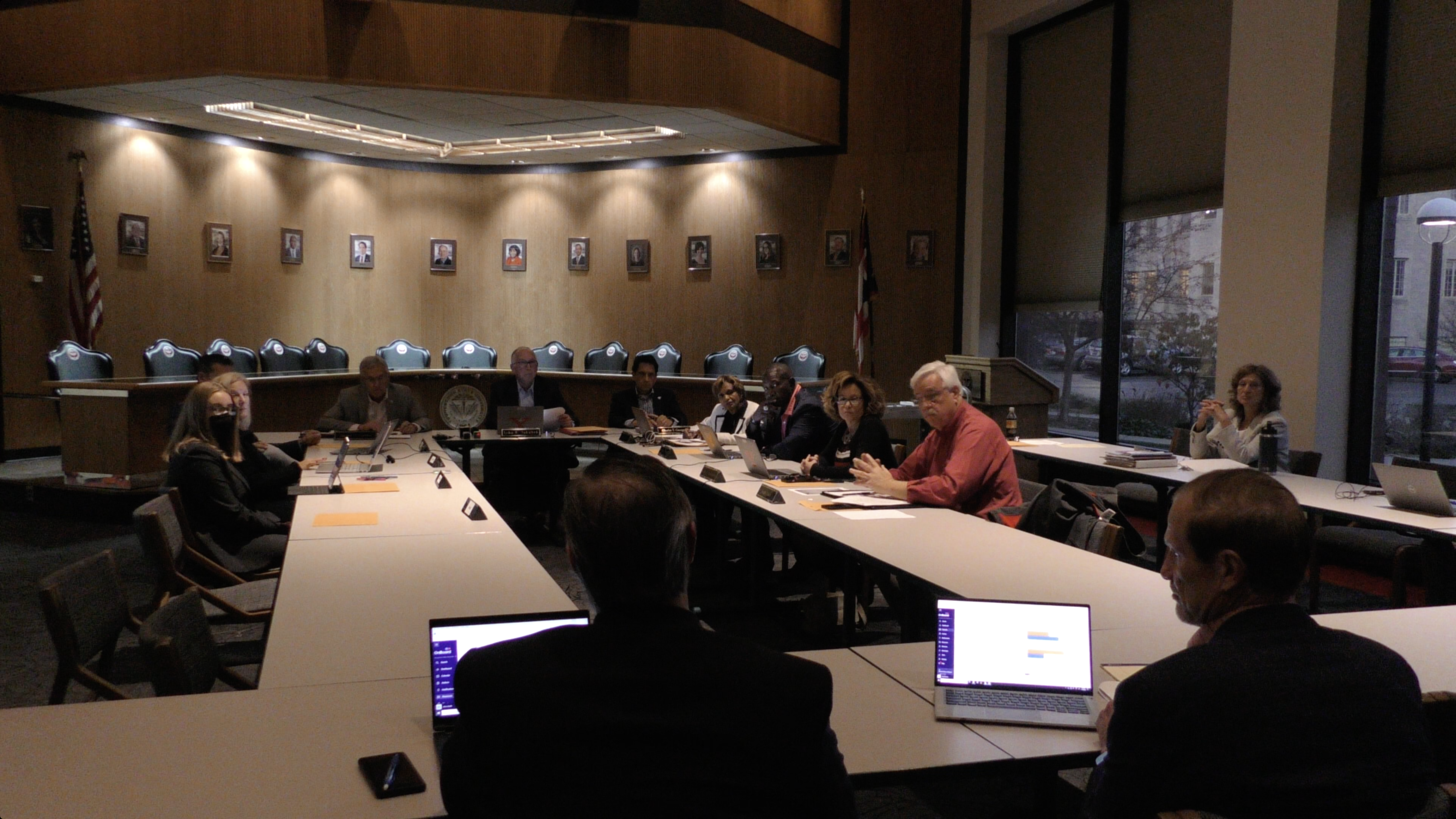By Elizabeth Coss
Members of Youngstown State University’s board of trustees called a special meeting Nov. 10 in accordance with the Ohio Revised Code, ahead of its scheduled meeting in December, to propose two resolutions.
Every five years, the board of trustees at every public higher education institution are required to evaluate courses and programs based on enrollment numbers and duplication with other nearby universities.
According to Jambar archives, the “Taking Charge of our Future” initiative goes back to 2019 and highlights areas of reevaluation for the university. Provost Brien Smith and Vice President of Institutional Effectiveness Mike Sherman presented the strategic plans and progress made.
The declining enrollment slope the university is facing was met by an increase of graduation rates and retention. Sherman said he saw this as a positive move forward.
“You may recall that we’ve looked at a graph that had the matrix approach to it, with quadrants that showed over a 10 year period our tuition stayed relatively low or constant, but our graduation rate went up,” Sherman said. “We went up 10% when the overall state graduation rates went up by 7% … retention rates, fall [semester] to fall went up 5% for the state and 7% for Youngstown State University.”
Sherman also said that despite an increase in graduation rates, enrollment numbers still affect revenue and university income.
“As our enrollment goes, so does our resources,” Sherman said. “Over a period of time, we’ve seen a 27% decrease in enrollment, a $10 million drop in revenue, and that means we have to continue to look at recent costs and gaining efficiencies.”
The resolution regarding low-enrolled courses and low-enrolled duplicative academic programs evaluation passed despite one trustee, Sergul Erzurum, abstaining from voting.
The resolution opened the door to the possibility of sunsetting programs and reducing amounts of low-enrolled courses. John R. Jakubek, chair of the board of trustees, spoke to the board about what the resolutions’ passing could mean for students, faculty and staff.
“I think there’s been some misunderstanding in the past that if we sunset something it’s effective immediately,” Jakubek said. “It is through these regular reviews that faculty, department chairs, deans and other academic leaders are able to respond to the current and future challenges and opportunities facing YSU and all higher education.”
The resolution was accompanied several days later by an email from the Office of the Provost to the university Nov. 15. Provost Smith stated that the university’s decisions will have a varied response, but should not be feared.
“We must emphasize that the potential number of programs and students impacted is very minimal. It’s also important for you to know that YSU is committed to ensuring that any such student will be held harmless,” Smith stated.
The board of trustees also approved a resolution to amend its bylaws, allowing for a standing committee to be created for the Division of Workforce Education and Innovation.
The meeting acted as the proposal’s first official reading. President Jim Tressel said agenda setting would begin after its second reading, with its first report occurring in the March trustee meeting.
“In the last meeting we created a division … and as that division has grown in the number of initiatives and so forth, in discussions about making sure we have the proper oversight, the proper interaction and awareness of our board, that we felt as if that we would like to propose to create a standing committee of the board for that oversight,” Tressel said.
Tressel also said the committee’s creation is a reaction to expansion within the division, such as project collaborations with other universities, including the Purdue Data Mine, and the recent announcement of the Foxconn partnership.
The next board of trustees meeting is scheduled for Dec. 9 in Tod Hall at 10 a.m. following the Dec. 8 individual committee meetings.
